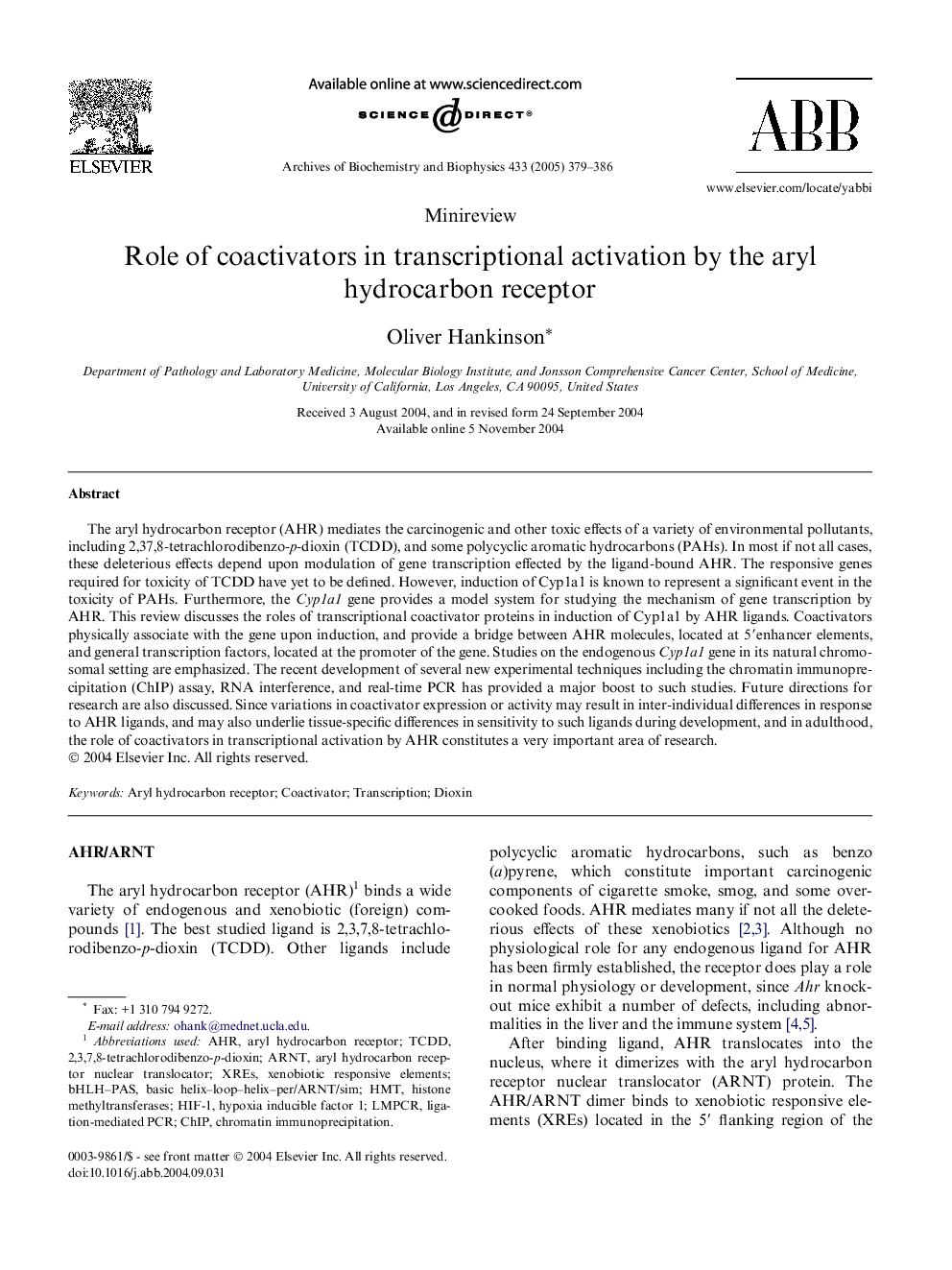| Article ID | Journal | Published Year | Pages | File Type |
|---|---|---|---|---|
| 9882375 | Archives of Biochemistry and Biophysics | 2005 | 8 Pages |
Abstract
The aryl hydrocarbon receptor (AHR) mediates the carcinogenic and other toxic effects of a variety of environmental pollutants, including 2,37,8-tetrachlorodibenzo-p-dioxin (TCDD), and some polycyclic aromatic hydrocarbons (PAHs). In most if not all cases, these deleterious effects depend upon modulation of gene transcription effected by the ligand-bound AHR. The responsive genes required for toxicity of TCDD have yet to be defined. However, induction of Cyp1a1 is known to represent a significant event in the toxicity of PAHs. Furthermore, the Cyp1a1 gene provides a model system for studying the mechanism of gene transcription by AHR. This review discusses the roles of transcriptional coactivator proteins in induction of Cyp1a1 by AHR ligands. Coactivators physically associate with the gene upon induction, and provide a bridge between AHR molecules, located at 5â²enhancer elements, and general transcription factors, located at the promoter of the gene. Studies on the endogenous Cyp1a1 gene in its natural chromosomal setting are emphasized. The recent development of several new experimental techniques including the chromatin immunoprecipitation (ChIP) assay, RNA interference, and real-time PCR has provided a major boost to such studies. Future directions for research are also discussed. Since variations in coactivator expression or activity may result in inter-individual differences in response to AHR ligands, and may also underlie tissue-specific differences in sensitivity to such ligands during development, and in adulthood, the role of coactivators in transcriptional activation by AHR constitutes a very important area of research.
Related Topics
Life Sciences
Biochemistry, Genetics and Molecular Biology
Biochemistry
Authors
Oliver Hankinson,
